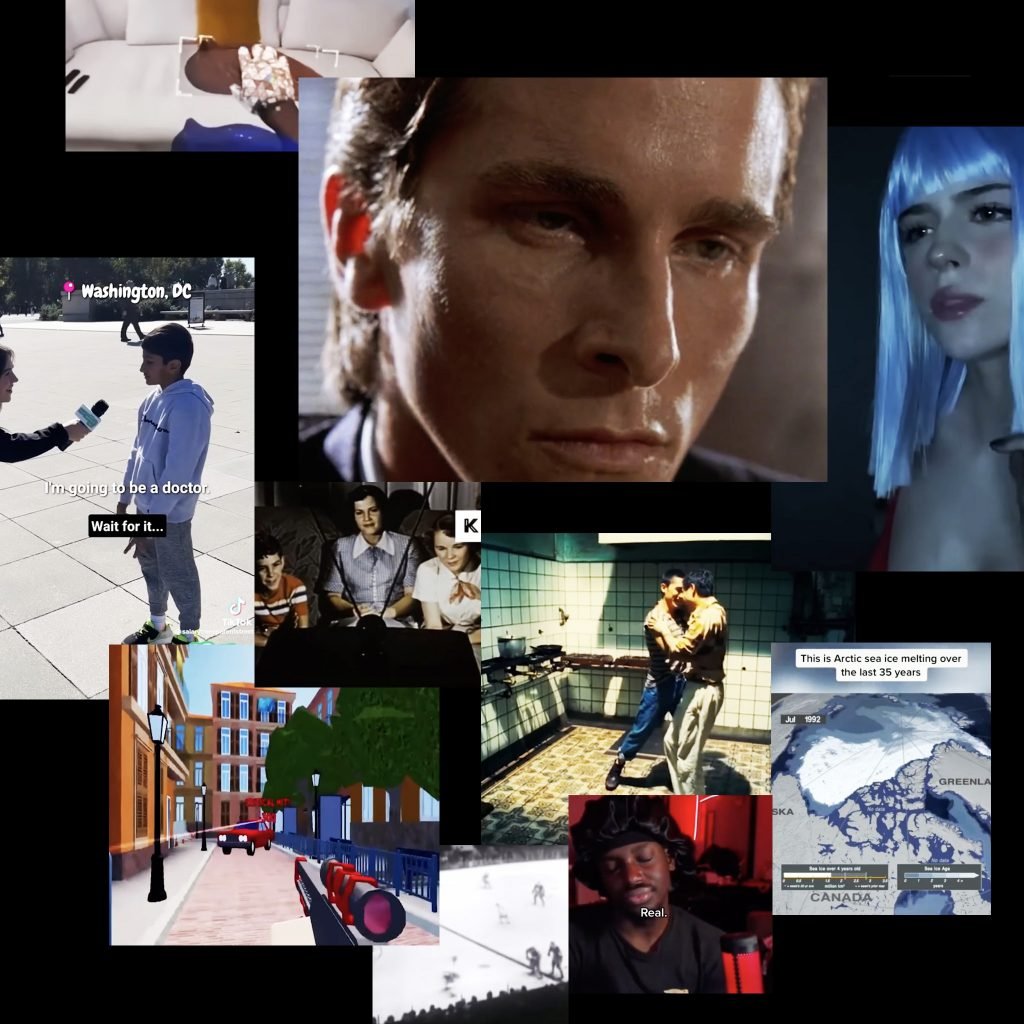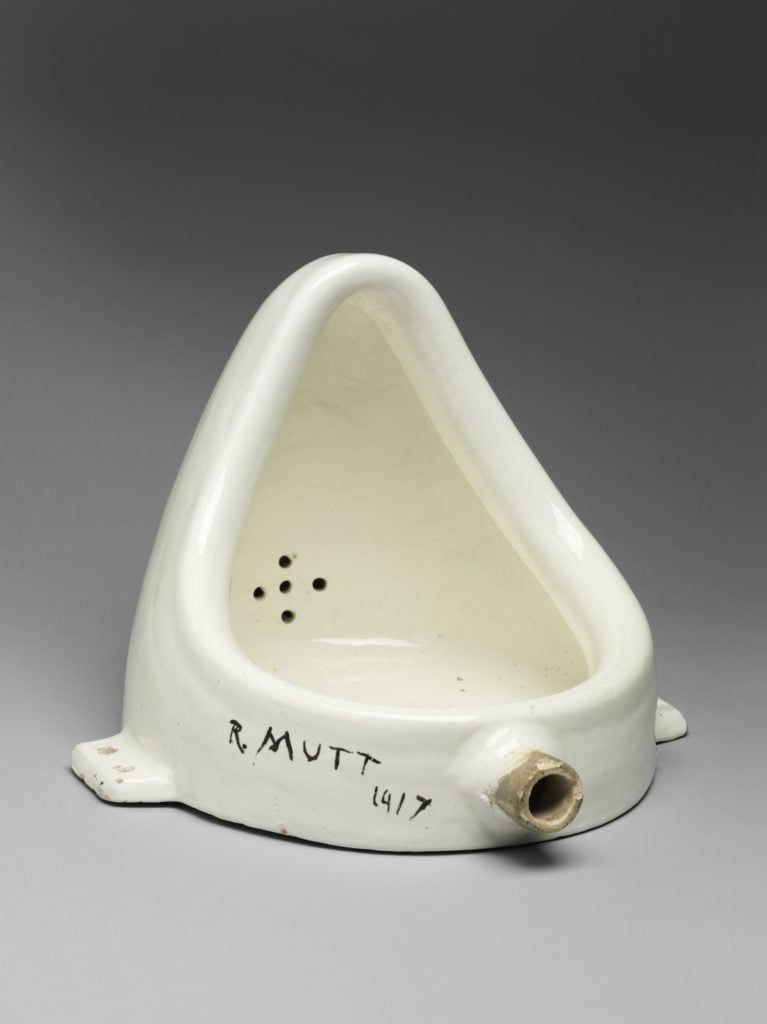Pop Culture
Explained: What Is Corecore, the Dada-esque ‘Artistic Movement’ Now Trending on TikTok?
Creators are capturing the post-2020 condition in chaotic video edits—might Duchamp have approved?

Creators are capturing the post-2020 condition in chaotic video edits—might Duchamp have approved?

Min Chen

From witchcore to cottagecore to Barbiecore—TikTok has been the birthing canal for a whole slew of aesthetic trends. Now, here’s one more: Corecore, dubbed an “artistic movement“ that captures the post-2020 sentiment and sensibilities of the short-video platform’s young users. No one here is getting togged up in Salem-inspired gear or waxing nostalgic about the agricultural life; instead, producers of corecore content are tapping a vein of contemporary ennui and digital overload in ways that are rooted in artistic practices.
For the uninitiated, we’ve put together a handy explainer of corecore, a genre that, judging from the moniker bestowed on this class of content, might just be the TikTok trend to top all TikTok trends.
Formally, corecore content on TikTok stitches together seemingly unrelated clips—whether culled from news footage, social media, films, livestreams, memes, or whatever else in the media ether—set to often somber music, to convey new meaning and emotion through juxtaposition.
Other similar terms to know include nichetok, a precursor and counterpart to corecore, and chaos edit, a self-evident style of video edit.
@sebastianvalencia.mp4 Wake up. #corecore #nichetok ♬ original sound – Sebastian V
While a number of early corecore videos could claim some political or philosophical underpinnings, most have been viewed as more of an aesthetic experience offering catharsis as much as profundity. Consider it meaning-making via doom-scrolling, perhaps—an attempt to locate a center amid a disorienting, algorithm-powered digital existence.
In the words of one user, corecore is “life changing because it makes you see the visual of your sad and meaningless life.”
@shmomp♬ What Falling in Love Feels Like by Jacob Hoover – jake
Maybe it is, or maybe the times are. Corecore, enmeshed as it is in the disenchantment of 21st-century life and media (clips from American Psycho, Blade Runner 2049, and Breaking Bad make regular appearances in these videos), probably can’t help but serve nihilism. As people who engage with corecore are wont to say: “Real.”
According to Know Your Meme, #corecore had roots in Tumblr as early as 2020, before making its way to TikTok, where such videos were first deemed “nichetok.”
On January 1, 2021 Mason Noel, the “OG corecore,” posted one of the genre’s earliest artifacts. In it, he spliced together clips showing melting sea ice, Youtuber Charli D’Amelio, a Black Friday sale, and Patrick Bateman from American Psycho—seemingly passing comment on media saturation, if not the state of the union. “Welcome to the land of the free and broken,” wrote one commenter.
@masonoelle send me tiktoks u think i would like #capitalism #decay #fyp #Bye2020 ♬ original sound – Ok_felicity
Another TikToker, John Rising, was also an early corecore creator, whose account, stocked with cinematic collages, has amassed upwards of 175,000 followers and 3.9 million likes. As the genre has coalesced into a thing, other exclusively corecore accounts have also lately sprouted across the platform, with #corecore having received 664 million views and counting.
In form and intention, corecore’s video collages, which invite the viewer’s own emotions and interpretations, have an immediate kin in the work of Adam Curtis.
In his documentaries—from Hypernormalisation (2016) to Can’t Get You Out of My Head (2021) to the five-part TraumaZone (2022)—the British filmmaker conjoins archival footage to present ominous yet alert commentary on the threat of political and social systems to personhood.
Speaking to Film Comment in 2012, Curtis named Robert Rauschenberg, known for his innovative “combines,” a key influence on his filmmaking style. He added, “art and content are indivisible.”

Marcel Duchamp, Fountain (1950 version of 1917 original). © Artists Rights Society (ARS), New York/Estate of Marcel Duchamp.
And then there’s the Dada of it all. As pointed out by TikToker Aamir in a January 14 video and expanded on by Hyperallergic, corecore could likely claim a spot alongside the 20th-century movement, whose artists wielded collage, cut up text, sculpture, and multimedia to inveigh against the logic and aesthetics beloved by the bourgeoisie. “Dada was born of a need for independence,” German author Hugo Ball wrote in “Dada Manifesto 1918,” “of a distrust toward unity.”
Pointing to Duchamp’s 1917 readymade Fountain, Aamir argued, corecore is similarly elevating the meaninglessness of an everyday experience—the endless and random media scroll—by “the sole act of representing it.”
@aamirazh #corecore #postmodernism #dada #art ♬ original sound – aamir
Yes, unlike the many TikTok-birthed trends, corecore does stand out for its meta-output and critique that throws into relief all the “-core”s that have come before it—hence the label “corecore.” Its content is chaotic and absurd, but in the view of creators like Aamir, it’s this Dada-esque nature—making sense out of the nonsense of being online—that levels up the genre.
“What does art do,” he said, “if not attach meaning to the meaningless and arbitrary experiences we have as humans.”
More Trending Stories:
Emily Sargent, Not Just a Sister to John, Was a Serious Painter in Her Own Right. Her Watercolor Landscapes are Finally Entering Museums—and the Spotlight
Explained: What Is Corecore, the Dada-esque ‘Artistic Movement’ Now Trending on TikTok?
Henri Matisse’s Great-Grandson Has Collaborated With Guerlain on a $17,000 Perfume Bottle Inspired by the Celebrated Painter
What’s the Deal With That Essay About How the ‘Waffle House Brawl’ Is Like an Edward Hopper Painting? Here’s My Guess
‘I’m After Something More Sublime’: Sam Falls on Making Art Out of Nature to Capture the Nature of Time
How the Buzzy Young Artist Joseph Yaeger Is Constructing His Cinematic Language in Striking Watercolors
‘Gmail Art Advisors’ Are a Pestilence on the Market. Luckily, They Are Starting to Melt Away, One by One
The Art Angle Podcast: Marc Spiegler on the Evolution of the Art Business (and Life After Art Basel)
A Keen-Eyed Shopper Paid $700 for a Chandelier in an Antique Store. It Turned Out to Be an Alberto Giacometti Worth Up to $3 Million